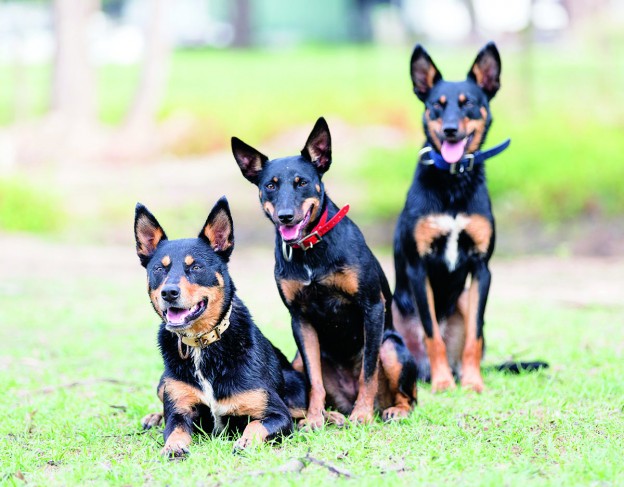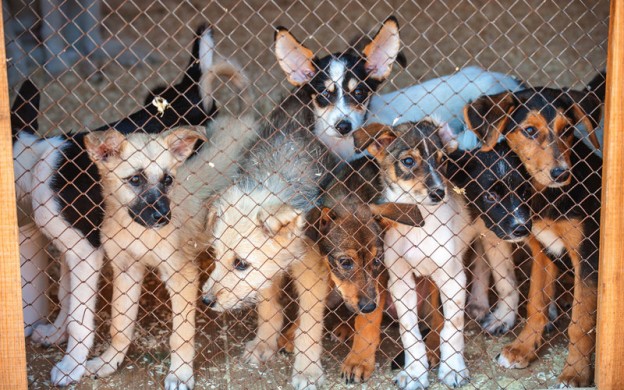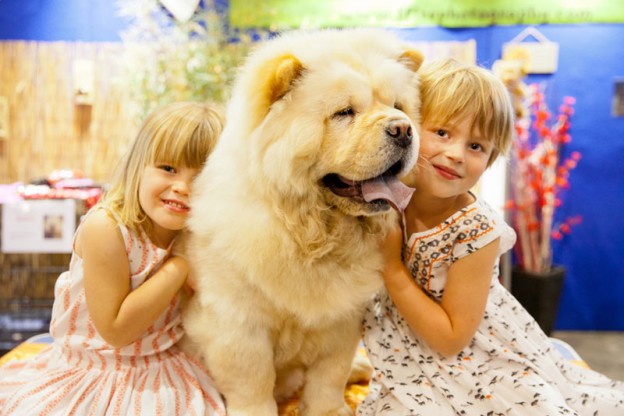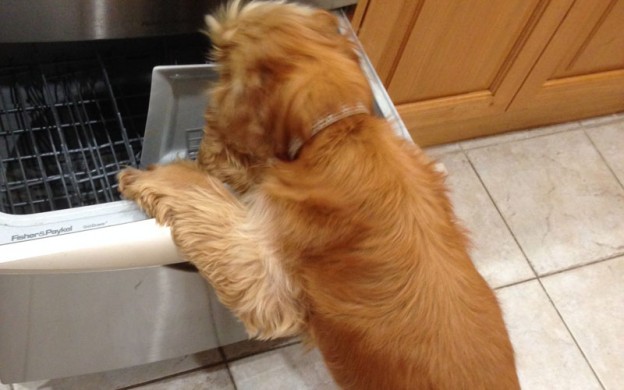
Caroline Zambrano investigates smart dogs, what makes a dog intelligent and learns ways to help develop your dogs brain function through nutrition, stimulation and socialisation no matter what breed you have.
Canine intelligence is the ability of a dog to learn, think and solve problems. Dog owners, trainers, researchers and other experts find it difficult to agree on a method for testing canine intelligence because what these experiments really do is test what its designers think an intelligent dog should know.
So how do you know how clever your pooch is? More importantly, can you help develop your dogs IQ? Dogs Life discovers the secrets behind improving your dogs brain function, no matter what breed it is.
Dr Myrna Milani is the founder of TippingPoint Inc., an organisation in the United States devoted to the advancement of our understanding of the interaction between animal health, behaviour and the human-animal relationship. She has been interviewed over the years by major American TV networks regarding various aspects of the human-animal bond and has also written on the subject of canine intelligence.
Many people believe dogs think the same way humans do, however, Milani says in an article on canine intelligence tests (visit www.mmilani.com) that our four-legged companions use their brains differently to process data. For instance, while humans pay a lot more attention to detail on physical features (ie, colour, body type), canines focus less on the details and more on processing motion and scent.
Wide interpretations of intelligence
There is a wide variety of interpretations as to what makes a dog intelligent. Some breeds have been selectively bred for hundreds of years for the quality of learning quickly. Other breeds, such as sled dogs or sight hounds, demonstrate intelligence in other ways.
For instance, a hunting Beagle cleverly detects its prey and then follows a scent to its source, while ignoring all distractions except its owners commands. A working Border Collie juggles multiple concepts simultaneously it moves flock toward a specific goal while monitoring any signs of dawdling or escape and observes the area surrounding the flock for potential dangers, whilst remaining alert to any signals from the herdsmen. These breeds are equally brilliant in their own element, but you would not expect a good hunting breed to perform like a working breed, and vice versa.
Furthermore, the ability to learn quickly (ie, house training) could be seen as a sign of intelligence, writes well-known professor of psychology, author and prize-winning dog trainer Dr Stanley Coren in his book, The Intelligence of Dogs. It could also be interpreted as a sign of blind subservience and a desire to please.
Coren says that, in contrast, some dogs that do not learn very quickly may have other talents. Siberian Huskies, which are not particularly interested in pleasing their owners, are fascinated with the myriad possibilities for escaping from the backyard and catching small animals. It takes a clever dog to do that!Intelligence can also be measured by the dogs ability to recognise a large vocabulary of commands. In 2008, a Border Collie named Betsy made it on the cover of National Geographic magazine for knowing more than 340 words.
She was also able to distinguish the correlation between an image in a photograph and an actual object, despite having seen neither before. Assistance Dogs (most popular are Golden Retrievers and Labradors) must also learn a tremendous number of commands, understand how to act in a large variety of situations and recognise threats to their human companions, some of which they might have never encountered before. What about canines working with police, customs or security? To succeed, these dogs must be able to learn, solve problems and respond quickly. Now that’s intelligent!
Developing high achievers
At the end of the day, it doesn’t matter what breed of dog you have. Like breed expert Dr Carmen Battaglia wrote in his article Developing High Achievers (originally published as Early Neurological Stimulation), dogs that achieve and outperform others seem to have within themselves the ability to use hidden resources. In other words, its what they are able to do with what they have that makes the difference, he writes.
Holding a PhD and Masters degree, Battaglia is a researcher, author, American Kennel Club (AKC) judge, well-known lecturer and leader in the promotion of breeding better dogs (www.breedingbetterdogs.com). His seminars and materials provide breeders with an easy method for understanding the pedigrees of their dogs.
Battaglia says in his article that the entire process of selection and management in many animal-breeding programs is founded on the belief that performance is inherited, and it has only been in recent decades that good estimates of heritability of performance have been based on adequate data.
A 1991 study (P Cunningham) of horses found that only by using Timeform data and measuring groups of half-brothers and half-sisters could good estimates of performance be determined. Data showed that performance for speed is about 35 per cent heritable and the remaining 65 per cent are attributed to other influences, such as training, management and nutrition.
Cunninghams studies are limited to horses, but they provide a good basis for understanding how much canine breeders can attribute to the genetics and the pedigrees, as well as improving canine brain function.
A breeders experience
A German Shepherd breeder and trainer of nearly 40 years, Christine Anderson develops working dogs that have served the community in many ways from working with disabled children in nursing homes and palliative care, to fighting crime with police and correctional services.
Andersons German Shepherds have gone to work with the NSW Police and NSW Corrective Services a number of these intelligent canines received awards for community service and bravery. She owes her dogs performance success to early neurological stimulation (ENS) and shares with Dogs Life the secrets behind it.
Originally from the United Kingdom, Anderson started doing stimulation exercises with her pets at the age of 12, not realising what she was actually doing. I began with kittens going through mazes and walking across narrow planks over baking dishes filled with water, she tells Dogs Life. I noticed the kittens that had work and toy or food-related rewards were really clever. I did the same with friends puppies minus the plank walk.
When raising puppies Anderson had noticed that streetwise mutts had superior intelligence to the average pet, especially purebreds. Did this mean mutts were bright and purebreds dumb, or were other factors in play? More than five years of serious investigation showed Anderson the average show/purebred breeder of valuable stock tended to keep the pups under lock and key with little outside stimulation.
The mutt had to learn to take its chances in the world, including finding breeding partners, crossing busy roads, tagging around kids at school and disappearing when the Animal Control arrived, she says. Right from the nest they had investigated and taught themselves by trial and error. Dogs have even been known to regularly catch trains to favourite destinations or live the life of a hobo. [Visit http://digg.com/d1o9nt and read about Moscows smartest street dogs!] Smart dogs, I realised, even learned to cross at foot-crossings with humans and could quickly understand the sounds of electronic walk signals. That was fascinating to see and those dogs were truly the university students of the canine world.
Anderson allowed her very first litter of puppies access to not just the dog pen but also the backyard from four weeks of age. She put out various cardboard boxes with shapes and holes cut in them. The puppies used these boxes to investigate and make up chasing games.
Seeing the value of how they all quickly developed smart thinking processes, I gradually began to upgrade with a variety of ramps made of different textures, she adds. Some puppies were exceptional and became the ones easy to teach very difficult tasks and would learn to problem solve.
There are many benefits of using ENS on young canines. You get a more versatile pet that is going to be more accepting of unusual or new situations away from home, she says. Soon, other canine breeders learned of Andersons work and began doing the same with their litters they were astounded by the results, she says.
Stimulation exercise ideas
Anderson shares some ways to help improve your dogs intelligence, whether your furry friend is an average house pet or performs in agility or obedience. You can buy improvised tunnels from hardware or building suppliers, then place these tunnels in gateways so your pup learns to run through them as he leaves the pen, she says. Your puppy would soon automatically race through the tunnels when doing what comes naturally running along a fence line.
Anderson also suggests placing other obstacles, such as weldmesh ramps, so pups learn to run up slight inclines over a strange surface. You can include planks of wood to slightly raised platforms with food bowls on them so the pups have to negotiate an obstacle to reach their meal.
From a pet shop you can purchase a portable fence just more than a metre high. Several of these clipped together are easy to turn into a maze, especially if you use two or more. Really bright puppies quickly learn how to get around or through them even if the pattern is changed, Anderson says.
You can also use a plastic kids play gym set for your puppy to use to play, explore and invent games. The ladders are placed so they run across them through tunnels rather than climb to a height they may fall from.
How about dragging towels on ropes along the ground to develop your puppys prey drive? It is essential the puppies are not pushed or pressured into learning tasks, but teach themselves and find their own comfort level working through what makes you and consequently them happy by your praise, Anderson says.
Dogs can get stimulation and environmental enrichment from home, especially if it involves the kids, Anderson says. Playing with the kids at home alleviates boredom for your dog, she says. Kids, if guided right, make the best dog trainers. Kids love it! They give dogs lots of natural praise.
Nutrition and intelligence
Together with stimulation and enrichment, feeding a quality diet can also help to improve canine brain function. Because you can’t really measure a dogs IQ, there has been no research done on the effects of nutrition on canine intelligence. However, researchers have been able to measure cognitive function and results show that nutrition plays a large role in improving brain function from birth through to puppyhood to young adult and senior and geriatric dogs.
Some signs of cognitive dysfunction in canines include vagueness, behavioural changes, out-of-context vocalisation, increased anxiety, altered sleep patterns and decreased responsiveness to play, eat or walk. Sydney veterinarian Dr Barbara Fougere, well-known author of dog health books and authority on natural veterinary medicine, says in the last two to three years we are gaining a lot more information on the role of diet on brain function. For example, dogs are one of the primary models used in studying Alzheimers in people.Recent studies in the US and Europe show a connection between oxidative damage and decline in brain function in older dogs, she tells Dogs Life. There is also a connection between low-grade chronic inflammation and degenerative changes in the brain (showing a decline in brain function). Inflammation is a key mechanism in altering brain function. So if we look at an anti-inflammatory diet, this is where nutrition becomes important in delaying degeneration.If an animal has inflammation, natural therapies can also help, such as CranioSacral therapy and acupuncture, both of which encourage the body’s natural mechanisms to improve the functioning of the brain and spinal cord, not to mention enhance general health and resistance to disease.
Plant-based herbs contain a lot of antioxidants; they have amazing benefits. We know that herbs can influence brain function, Fougere says. For instance, in two studies, dogs given a treatment of gingko biloba or panax ginseng showed improvement of cognitive function these herbs are used as a natural treatment rather than a preventative. You can also sprinkle rosemary, turmeric or sage on your pets food to help with memory and mental function, she says.
Including omega-3 fatty acids in your dogs diet may also help to improve brain function. Fougere suggests adding good quality, TGA-approved (or tested for heavy metals) fish oil containing high levels of DHA and EPA. We know that feeding bitches fish oil during gestation and lactation aids in brain development in puppies, she says.
Research also shows adding fresh vegetables to your dogs diet benefits cognitive brain function. Feed your dog a couple of blueberries a day its a good wholefood supplement, Fougere suggests.
Socialisation
We covered the benefits of ENS and nutrition on canine intelligence, but its also important to recognise the important benefits of socialisation. Dogs Life catches up with Sydney animal behaviourist Dr Joanne Righetti to find out more.
Socialising puppies helps them to accept experiences in life. It normalises them, Righetti says. I think of it like a filing system in the brain. Once a pup has had a positive or negative experience with an encounter or event, it is filed as such in the brain. Then when the similar experience comes up again, the pup is able to draw on memory reserves and act accordingly.Socialisation has a sensitive period and is easiest under four months of age, she adds. Learning continues throughout life. Therefore, socialisation does not equal intelligence, but adequate socialisation when young should certainly improve intelligence.
Dogs Life also contacted Queensland dog trainer Ross Allan, an author of dog training books with more than 38 years experience training a variety of breeds in obedience, protection and tracking. Professionally trained by the RAAF in 1970, Allan says he has used early neurological stimulation with puppies with great effect in producing dogs with a superior brain, calmer disposition and stronger immune system.What is particularly important to me is that puppies must be well socialised by the time they are 12 weeks old to activate the area of the brain that relates to developing a confident outgoing dog necessary for service work, or indeed a more confident and relaxed pet, Allan tells Dogs Life.
Games for your clever dog
What can dog owners do at home to help improve their dogs intelligence? Improving brain function in any animal is a matter of using it, Righetti says. Expose your dog (puppy, adult or elderly) to various events in life and reward good reactions to them. Incorporate training into the dogs life and they will improve their behaviour immensely, she adds.
Dogs respond well to our body language, so teaching them sign language (eg, hand raised means sit) works well. They also respond to language, so introducing voice commands helps, too.
Righetti suggests some doggy games that will help to improve your dogs brain function:
- Hide food and let your dog find it make it easy to start with.
- Hide yourself and play hide and seek. This will improve your dogs scent location ability.
- Ask your dog to perform a command throughout the day. This will enable its mind to stay alert.
- Periodically teach a new trick. This makes it fun for both you and your dog and keeps your dogs mind active.







